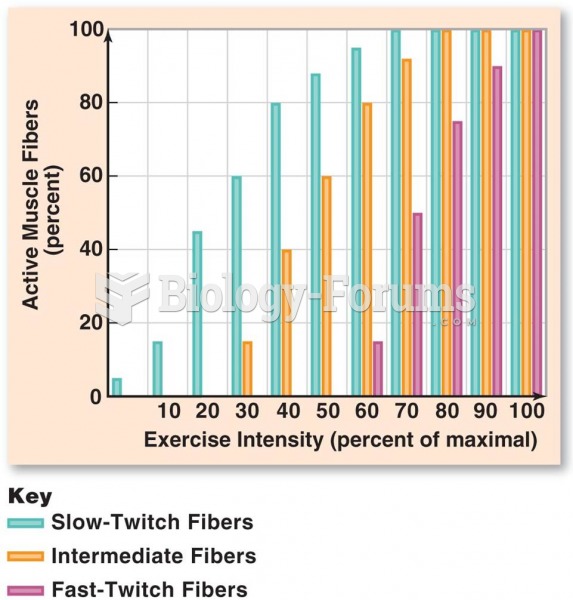Answer to Question 1
B, C, D, F
a. Incorrect. Fewer T-lymphocytes are associated with age-related changes caused by au-toimmune reactions wherein the body recognizes itself as a foreign substance and works to destroy it. Type 1 diabetes mellitus is considered an autoimmune disorder.
b. Correct. Less lean muscle mass means that the body has fewer insulin receptor sites; thus glucose circulates in the blood stream longer, leading to hyperglycemia and type 2 diabetes mellitus.
c. Correct. Decreased thyroid function decreases the metabolic rate. If the metabolic rate de-creases without a corresponding decrease in caloric intake, the body consumes more food than it needs for its metabolic rate and hyperglycemia occurs.
d. Correct. Decreased physical activity contributes to type 2 diabetes in two ways. First, a less active person has less lean muscle mass than an active person. Second, physical activity helps to metabolize glucose; if activity decreases and food consumption does not decrease, hyperglycemia occurs.
e. Incorrect. Left ventricular hypertrophy is not directly related to the increased incidence of type 2 diabetes in older adults; however, if hypertrophy leads to exercise intolerance, then it can be related to an increased incidence of type 2 diabetes.
f. Correct. Insulin sensitivity decreases with age and increases the need for insulin in older adults. To prevent hyperglycemia, the older adult must increase physical activity and de-crease food consumption.
Answer to Question 2
B
The nurse determines when the symptoms first appeared or the time of the fall to determine whether sufficient time is left to administer reperfusion tPA; if indicated, tPA must be adminis-tered within 3 hours of symptom onset. A patient with clinical indicators of a stroke will need a computed tomographic (CT) scan to differentiate between a thrombotic stroke and a hemorrhagic stroke; the type of stroke will determine the therapeutic course. The time of symptom onset is a vital piece of information that must be determined before the patient is referred to the radiology department because tPA is usually administered in the radiology suite. Administering tPA can be contraindicated for this patient; therefore the preparation of this infusion is delayed until the type of stroke and the plan of care are determined. The nurse will not have enough time to complete a comprehensive assessment and thus will perform a focused assessment in preparation for the trip to radiology.







